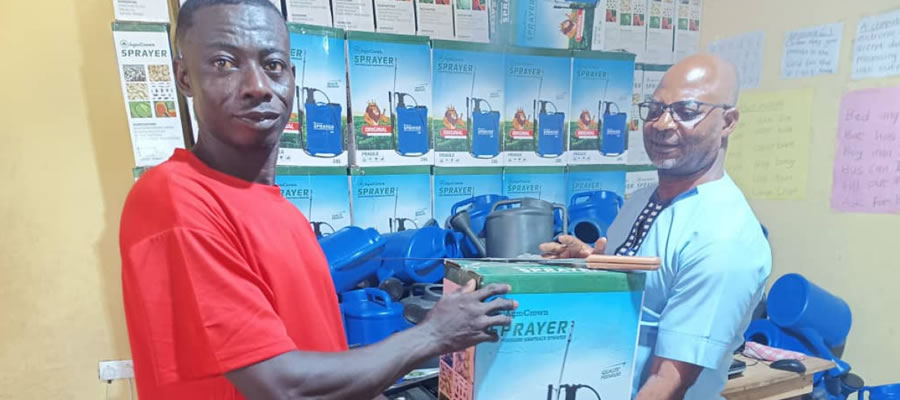

Relevant Data
Location and Size
The district covers a total area of 380 square kilometers. It is located between latitude 5°05’N and 5°25N and longitude 1°5W, and 1°20W. It is bounded on the North, by Assin South District,on the East by Mfantsiman Municipal, on the South-East by a 5km stretch of the Gulf of Guinea, on the South by Cape Coast Metropolitan and on the West by Twifo-Heman-Lower Denkyira District.
Topography
The district is basically low-lying and undulating with elevations between 20 and 80 meters above sea level. Two notable topographical features occur in the form of mountains (Aburabura and Katakyi) with elevations high enough to constitute the only critical farthest landmarks which fishermen in Moree observe on the high seas in their fishing activities in the Gulf of Guinea.
Climate AAK falls within the Evergreen and Semi deciduous forest zones. The area thus experiences a double maxima rainfall. The major raining season starts at the end of April, peaking in May-June and declining in July. The minor rainy season begins in October and reaches a peak in November, declining by the middle of December.Annual rainfall in the southern part of the District
and the coastal savanna area around Moree is generally lower between 100cm and 110cm, than in the northern interior, ranging between 110cm and 170 cm. However, the area close to the margin of the forest zone which comprises part of the Kakum valley experiences annual rainfall of about 190cm
Vegetation
The vegetation consists of dense scrub tangle in the south, stretching to Asebu and Abakrampa. Deciduous forest covers the northern and south western portions and merges with the tropical rain forest of the Kakum valley along the south eastern stretch of the district. Beyond this area and covering almost the rest of the district, the vegetation gradually becomes secondary thick
bushes with isolated ‘onyaa’’ trees, an uneconomic and small-sized diameter trees as a result of centuries of farming, logging and bush farming.
Geology and Soil
The District consists of upper and lower Brimian rocks of granite formation which is of good quality for the manufacture of products and materials for road and industrial construction. Near Bosomin area in the Kwamankese Traditional area is underlain by the Cape Coast granite an estimated 2.5 million-ton deposit of kaolinite for emulsion and oil paint production. Although several metals, such as gold, talc and diamonds are believed to exist, appropriate studies are required to confirm their economic and industrial potential for exploration. The soils within the District have not been studied extensively in terms of type. However the continuous cultivation of tree crops such as citrus, oil palm, cocoa, coconut and food crops like cassava, maize, plantain, yam, and some vegetables suggest some level of suitability for some types of crops.
Drainage
The District is basically drained by three water bodies, the Kakum River, the Kura River and the Mankensu Spring. There are also several streams and swamps, which join other streams and flow into rivers especially in the rainy seasons.
Date Created : 7/21/2023 12:00:00 AM











 facebook
facebook
 twitter
twitter
 Youtube
Youtube
 +233 593 831 280
+233 593 831 280 0800 430 430
0800 430 430 GPS: GE-231-4383
GPS: GE-231-4383 info@ghanadistricts.com
info@ghanadistricts.com Box GP1044, Accra, Ghana
Box GP1044, Accra, Ghana